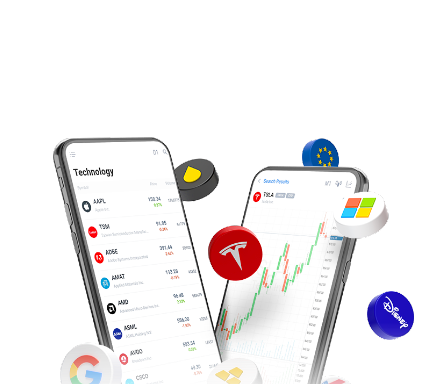Birkenstock's Market Stride: Analysing Its IPO and Stock Performance

12 minutes for reading
The Rise of Birkenstock: A Brief History
Birkenstock, a renowned name in footwear, boasts a legacy that intertwines with the evolution of modern shoes. Originating in the late 18th century, the brand has journeyed through centuries, adapting and influencing footwear trends. Johann Adam Birkenstock registered in 1774 as a "shoemaker" in local church archives in Germany, laying the cornerstone for a saga that would span generations.
The Birkenstock footwear's distinct identity began shaping in 1896 when Konrad Birkenstock, Johann's descendant, owned two shoe shops and innovated the contoured insole. This innovation was a precursor to the famous Birkenstock footbed. By 1902, amidst the Industrial Revolution and changing fashion sensibilities, Konrad introduced the "flexible arch support," an insertion into factory-made shoes that aligned with foot health consciousness.
The 20th century saw Birkenstock's evolution into a symbol of comfort and health. In 1964, Karl Birkenstock transformed these inserts into a whole shoe, creating the iconic Birkenstock sandal. This innovation marked a new era in 'healthy' footwear, emphasising natural foot shape and movement.
Birkenstock's impact extended globally in the ensuing decades. The 1960s and 70s, eras marked by social change and the rise of the health and wellness movement, saw Birkenstock sandals become symbols of comfort and natural living. This appeal wasn't confined to Germany; the US market embraced Birkenstocks, aligning them with a lifestyle choice rather than just a footwear option.
Entering the 21st century, Birkenstock continued to innovate while staying true to its core values of quality and comfort. The brand expanded its product line, embracing new designs and collaborations, thus appealing to a broader audience. This period also saw Birkenstock's commitment to sustainability, with eco-friendly production processes and materials further solidifying its market position as a responsible and conscious brand.
Today, Birkenstock is a testament to enduring quality and a unique blend of tradition and innovation. Its journey from a small village in Germany to global prominence is a story of adaptability, quality, and an unwavering commitment to foot health and comfort. The brand's legacy continues to stride forward, marking its footprints in the sands of time and on the feet of millions worldwide.
Birkenstock’s Business Model
Birkenstock's success is anchored in a business model that synergises traditional craftsmanship with modern market strategies. The company's core approach is built on its footwear's enduring quality and distinct design, coupled with a keen awareness of consumer trends and environmental responsibility.
- Craftsmanship and Innovation: Rooted in a long history of shoemaking, Birkenstock maintains an emphasis on craftsmanship. Each pair of shoes blends traditional techniques and innovative designs, ensuring comfort, durability, and style. This commitment to quality has fostered a loyal customer base and a strong brand identity.
- Direct-to-Consumer and Retail Strategies: In recent years, Birkenstock has expanded its direct-to-consumer (DTC) channels, including e-commerce platforms and company-owned stores. This strategy allows for better control over brand presentation, pricing, and customer experience. The brand also benefits from a strong presence in various retail outlets, which helps reach a wider audience.
- Global Distribution Network: Birkenstock's global distribution network is crucial to its business model. The company has established a significant presence in numerous countries, adapting to local market dynamics while maintaining a consistent brand image.
- Focus on Sustainability: Sustainability is another pillar of Birkenstock's business model. The company has implemented eco-friendly production practices and uses natural and renewable materials. This commitment not only appeals to environmentally conscious consumers but also aligns with global trends towards sustainability.
- Adaptation to Market Trends: Birkenstock has shown an ability to adapt to changing market trends. The brand has diversified its product range to include a range of styles, catering to different consumer preferences and seasonal demands. Collaborations with designers and limited-edition releases have kept the brand relevant and trendy.
Birkenstock's business model is a balanced mix of traditional craftsmanship, modern retail strategies, global distribution, a focus on sustainability, and adaptability to market trends. This model has enabled the brand to maintain its iconic status in the footwear industry while continuing to grow and evolve.
Birkenstock’s Financial Overview Before Its IPO
Birkenstock's financial performance reflects its strong market position and effective business strategies. A detailed examination of its financial data, as reported in its F-1 Registration Statement, reveals significant insights into the company's economic health.
Revenue and Profit Trends
Birkenstock has shown a consistent increase in revenue over the years. For instance, in the six months ending 31 March 2023, the company reported a revenue of €644.2 million, compared to €542.6 million in the same period in 2022. This trend is indicative of the brand's growing appeal and market penetration.
The company's gross profit has also seen a positive trajectory. In the first half of 2023, Birkenstock recorded a gross profit of €388.8 million, up from €306.1 million in the first half of 2022. This increase reflects the company's ability to maintain profitability despite market challenges.
Balance Sheet and Cash Flow
Birkenstock's balance sheet as of 31 March 2023 showed total assets of €4.6 billion, with shareholder's equity amounting to €2.3 billion. The company's strong asset base and shareholder equity underscore its financial stability.
The cash flow statements reveal that Birkenstock's operations generated €4.1 million in the first half of 2023, a turnaround from the €25.9 million used in operations during the same period in 2022. This indicates improved operational efficiency and effective cash management.
Non-IFRS Financial Measures
The company also reports non-IFRS financial measures like adjusted EBITDA, which stood at €224.4 million for the first half of 2023, representing a margin of 35%. These figures demonstrate Birkenstock's operational strength and profitability.
Birkenstock's financial overview presents a picture of a company with a solid revenue stream, increasing profitability, a strong balance sheet, and efficient cash flow management. This financial health is a testament to the brand's effective business model and market strategy.
Birkenstock IPO Outlook
Birkenstock Holding Ltd conducted its IPO on 11 October 2023 on the NYSE, placing 32.26 million ordinary shares. The expected market capitalisation at the time of the IPO was 8.7 billion USD, with an average share price of 46 USD and gross proceeds of 1.32 billion USD. The potential P/S reached 6.59, compared to the industry’s average P/S value of 0.87. Goldman Sachs Group Inc., JPMorgan Chase & Co., and Morgan Stanley served as the leading underwriters for the Birkenstock Holding Ltd IPO.
On the first day of trading, Birkenstock Holding Ltd (NYSE: BIRK) shares closed the trading session with a decline of over 12%, dropping from 46 USD to 40.20 USD per share. By 16 October 2023, the stock price had reached the low of 35.83 USD. Despite the company’s profitability and the brand’s high popularity among young customers, market investors did not find it sufficiently appealing.
According to Jon Keidan, founder and managing partner at Torch Capital, the decline of the Birkenstock Holding Ltd quotes could be attributed to shrinking consumer activity in the European and US markets due to rising inflation.
Another potential reason for the decline in the issuer’s stock price could be overestimating its potential during the IPO preparation. David Trainer, CEO of New Constructs, suggests that to justify the current evaluation of 8.7 billion USD, Birkenstock needs to generate annual revenue of 3.8 billion USD. As you might recall, the 2022 revenue amounted to 1.32 billion USD.
According to Trainer, such rapid earnings growth in the near future is improbable. The company lacks a strong brand, and investors should not expect aggressive stock price growth.
Note that when preparing this article, specifically on 20 November 2023, the shares traded near 42.72 USD, almost 19% above the low recorded on 16 October 2023.
Birkenstock Stock Technical Analysis
Since 16 October 2023, the quotes have been moving within an ascending channel. On 8 November 2023, the price started developing a bearish correction upon reaching 42.92 USD. On 13 November, it rebounded from the lower boundary of the bullish channel near 38.55 USD.
At the time of preparing this article, sellers were able to keep the 43.00 USD level unbroken. Strong buyer support is near 41.00 USD, where the lower boundary of the medium-term ascending channel and Bollinger Bands line are located.
It can be assumed that the level of 45.00 USD may become the target of the stock price growth after a rebound from this support area. If the quotes consolidate above this level, it could be interpreted as a signal for a probable breakout of the upper boundary of the ascending channel.
Another rebound from the support line on the RSI might additionally confirm possible stock price growth. Such a pullback already occurred on 13 November 2023: the stock price rose by 4.3% at that time. However, if the bears manage to grasp the initiative and lower the quotes to 39.00 USD, this could become a negative signal for buyers: the quotes will most likely leave the long-term bullish channel. In such a scenario, the decline could continue, and the sellers might aim at the local low of 36.00 USD.
Birkenstock stock technical analysis*
Challenges and Controversies for Birkenstock’s Shares
Birkenstock's journey, though marked by success, has not been without its challenges and controversies that the company would encounter to ensure the sustainable growth of its shares:
- Brand Image and Market Perception: As a brand heavily reliant on its image and customer perception, Birkenstock must continuously manage its reputation. Any negative publicity, whether related to product quality, customer service, or corporate actions, can significantly impact the brand.
- Quality and Supply Chain Management: Maintaining the high-quality standards for which Birkenstock is known poses challenges, especially in a complex global supply chain. Issues with suppliers, production quality, or logistical hurdles can affect product availability and brand trust.
- Counterfeiting and Intellectual Property: Counterfeit products are a significant issue for Birkenstock, as knockoffs can undermine the brand's value and reputation. Protecting its designs and intellectual property in various global markets is a constant challenge.
- Adapting to Changing Consumer Tastes: Staying relevant in a fashion-forward industry means continuously innovating and adapting to changing consumer preferences without losing the brand's core identity.
- Environmental and Ethical Concerns: As a brand committed to sustainability, Birkenstock faces scrutiny regarding its environmental impact and ethical practices. Ensuring that every aspect of its operation aligns with these values is crucial but challenging.
To effectively navigate these challenges, it is essential to employ strategic management and steadfastly adhere to the brand's core values. This approach is critical to achieving sustained success, maintaining integrity in a competitive market, and ensuring prominent stock price performance, ultimately benefitting the investors.
The Future of Birkenstock’s Stock Price
As we look forward, the trajectory of Birkenstock's stock price seems promising, underscored by strategic actions and prevailing market trends. Key factors influencing the stock price include:
- Global Market Expansion: Birkenstock's ongoing expansion into high-potential global markets is anticipated to impact its stock value positively.
- Product Innovation and Stock Appeal: Innovative footwear designs and materials could boost the stock as Birkenstock balances its traditional charm with contemporary trends.
- Impact of Digital Transformation on Stock: Strengthening digital capabilities, especially in e-commerce, will likely enhance the stock's attractiveness, marking a critical element for future growth.
- Sustainability and Stock Perception: A more profound commitment to sustainability through eco-friendly products and practices is expected to influence investor sentiment positively and, consequently, the stock price.
- Strategic Partnerships: Collaborations with renowned designers and brands are poised to open new markets and attract diverse customers, potentially elevating the stock price.
- Customer Experience and Stock Value: Investments in enhancing customer experience, both online and in-store, are crucial for sustaining brand loyalty and attracting new clients, which can have a positive impact on the stock.
Birkenstock's future strategy, which includes balancing core brand values with adaptive market and consumer trends, will likely foster a positive trajectory for its stock price.
Conclusion
Birkenstock, a renowned name in footwear, is distinguished in the global market for its unique combination of comfort, quality, and sustainability, which is pivotal in influencing its stock price. The company's strategic business practices, adaptability to market trends, and unwavering commitment to its core values have cemented its worldwide brand presence and positioned its stock favourably in the financial markets.
Despite the challenges inherent in the dynamic fashion and retail industry, the outlook for Birkenstock's stock remains optimistic. This optimism is fuelled by the company's dedication to innovation, digital transformation, and global expansion, critical drivers for stock value growth. As Birkenstock continues to evolve, integrating tradition with modernity, it does so not just as a symbol of quality footwear but also as a promising investment in the ever-changing world of the stock market.
From a technical analysis perspective, even with the stock price falling after the IPO, the shares have chances for possible growth. On 15 November 2023, buyers managed to gain a foothold above the upper boundary of the reversal Head and Shoulders pattern, which means that the uptrend could continue with the potential target of 45.00 USD. A price decline below 38.00 USD might be a negative signal for buyers.
1. Is Birkenstock a publicly traded company?
As of the latest information, Birkenstock is not a publicly traded company. It operates as a private entity, meaning its shares are unavailable on public stock exchanges.
2. What are the key factors influencing Birkenstock’s stock value?
For private companies like Birkenstock, stock value is influenced by company performance, market trends, brand reputation, and financial health.
3. How does Birkenstock’s environmental commitment affect its financial performance?
Birkenstock's commitment to the environment can positively impact its financial performance by attracting environmentally conscious consumers and building brand loyalty.
4. What are the potential risks of investing in Birkenstock?
Potential risks include market competition, changing consumer preferences, supply chain issues, and maintaining brand reputation and quality standards.
5. How has the COVID-19 pandemic affected Birkenstock’s business?
Like many companies, the COVID-19 pandemic has affected Birkenstock, potentially impacting supply chains and consumer buying habits. However, the shift towards comfort-driven fashion during the pandemic may have positively influenced the demand for Birkenstock products.
* – Past performance is not a reliable indicator of future results or future performance.
The material presented and the information contained herein is for information purposes only and in no way should be considered as the provision of investment advice for the purposes of Investment Firms Law 87(I)/2017 of the Republic of Cyprus or any other form of personal advice or recommendation, which relates to certain types of transactions with certain types of financial instruments.
The stock charts in this article are provided by the TradingView platform, which offers a wide range of tools for analysing the financial markets. It is a convenient, high-tech online market data charting service that allows users to perform technical analysis, study stock quotes and other financial data, and communicate with other traders and investors.
















 are complex instruments and come with a high
are complex instruments and come with a high  of losing
of losing  rapidly due to
rapidly due to  . 65.68% of retail investor accounts lose
. 65.68% of retail investor accounts lose  when trading
when trading  with this provider. You should consider whether you understand how CFDs work and whether you can afford to take the high
with this provider. You should consider whether you understand how CFDs work and whether you can afford to take the high